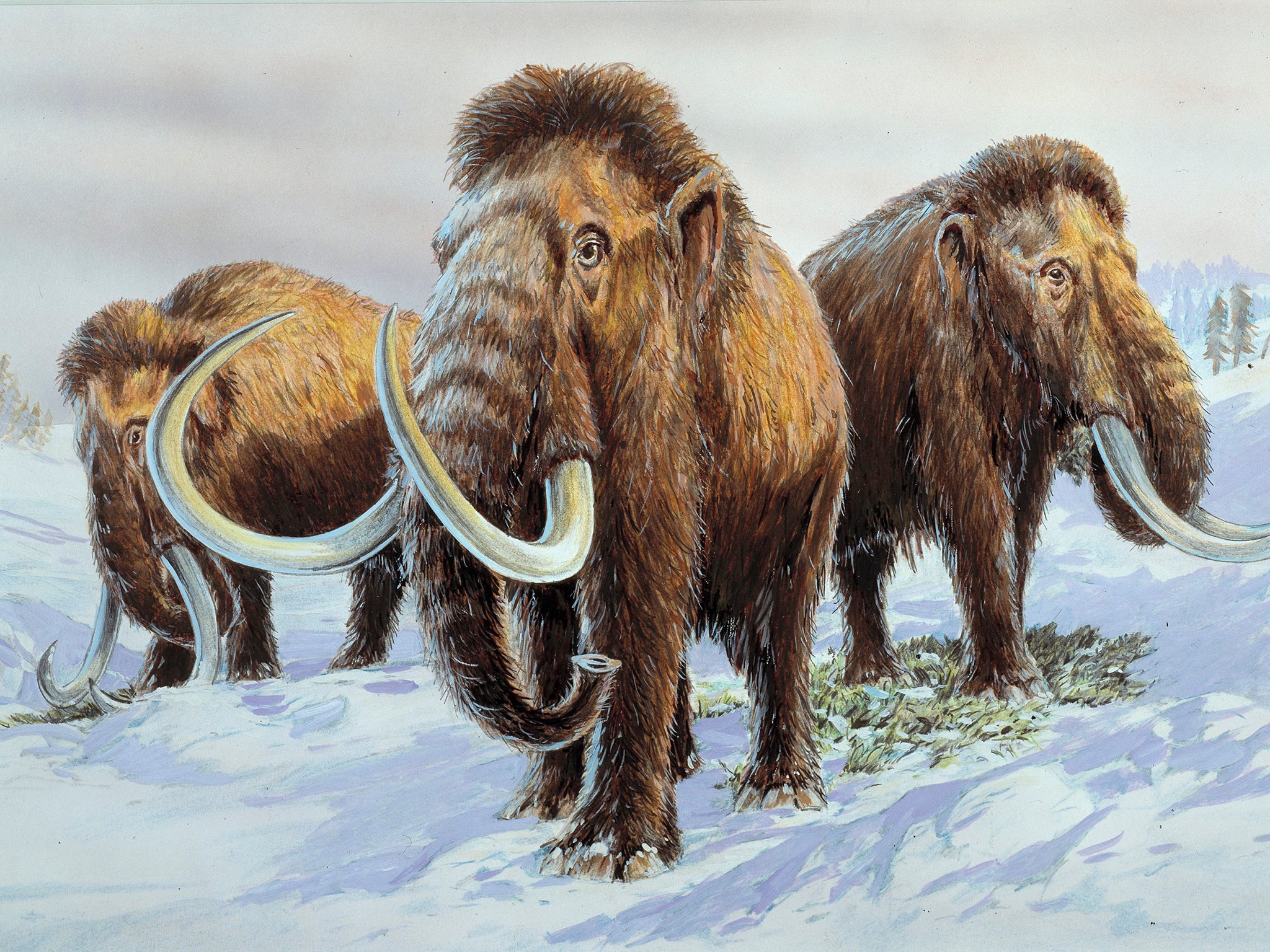Humans definitely killed off woolly mammoths, giant armadillo and sabretooth tiger, scientists claim
New research settles argument about whether whether humans or climate change was responsible for the end of ‘megafauna’, it is claimed, and ‘debunks the myth of early humans living in harmony with nature’

Your support helps us to tell the story
From reproductive rights to climate change to Big Tech, The Independent is on the ground when the story is developing. Whether it's investigating the financials of Elon Musk's pro-Trump PAC or producing our latest documentary, 'The A Word', which shines a light on the American women fighting for reproductive rights, we know how important it is to parse out the facts from the messaging.
At such a critical moment in US history, we need reporters on the ground. Your donation allows us to keep sending journalists to speak to both sides of the story.
The Independent is trusted by Americans across the entire political spectrum. And unlike many other quality news outlets, we choose not to lock Americans out of our reporting and analysis with paywalls. We believe quality journalism should be available to everyone, paid for by those who can afford it.
Your support makes all the difference.Scientists can now say definitively that humans are responsible for the death of ancient megafauna like the sabretooth tiger, the woolly mammoth, the woolly rhino and the giant armadillo, according to new research.
Researchers have long argued about whether the giant beasts were killed off by climate change or by humans. But the new findings from Exeter and Cambridge prove that man was the dominant force in killing them off, according to their researchers.
The animals, known collectively as megafauna, were wiped out over the last 80,000 years. All were extinct by 10,000 years ago.
To work out how that happened, researchers ran a statistical analysis that looked at all the possible times that they could have become extinct, and set that against the times that humans arrived in various places. They also compared that with reconstructions of the climate during those times.
“As far as we are concerned, this research is the nail in the coffin of this 50-year debate — humans were the dominant cause of the extinction of megafauna,” said Lewis Bartlett, from the University of Exeter’s Centre for Ecology and Conservation, which ran the study. “What we don’t know is what it was about these early settlers that caused this demise.
“Were they killing them for food, was it early use of fire or were they driven out of their habitats? Our analysis doesn’t differentiate, but we can say that it was caused by human activity more than by climate change. It debunks the myth of early humans living in harmony with nature.”
Researchers said that they will now look into why the megafauna continued to exist for so long in Asia, where they suffered very low rates of extinction.
“Whilst our models explain very well the timing and extent of extinctions for most of the world, mainland Asia remains a mystery,” said Andrea Manica, from Cambridge University, who was the paper’s lead supervisor.
The research is published in the journal Ecography.
Join our commenting forum
Join thought-provoking conversations, follow other Independent readers and see their replies
Comments